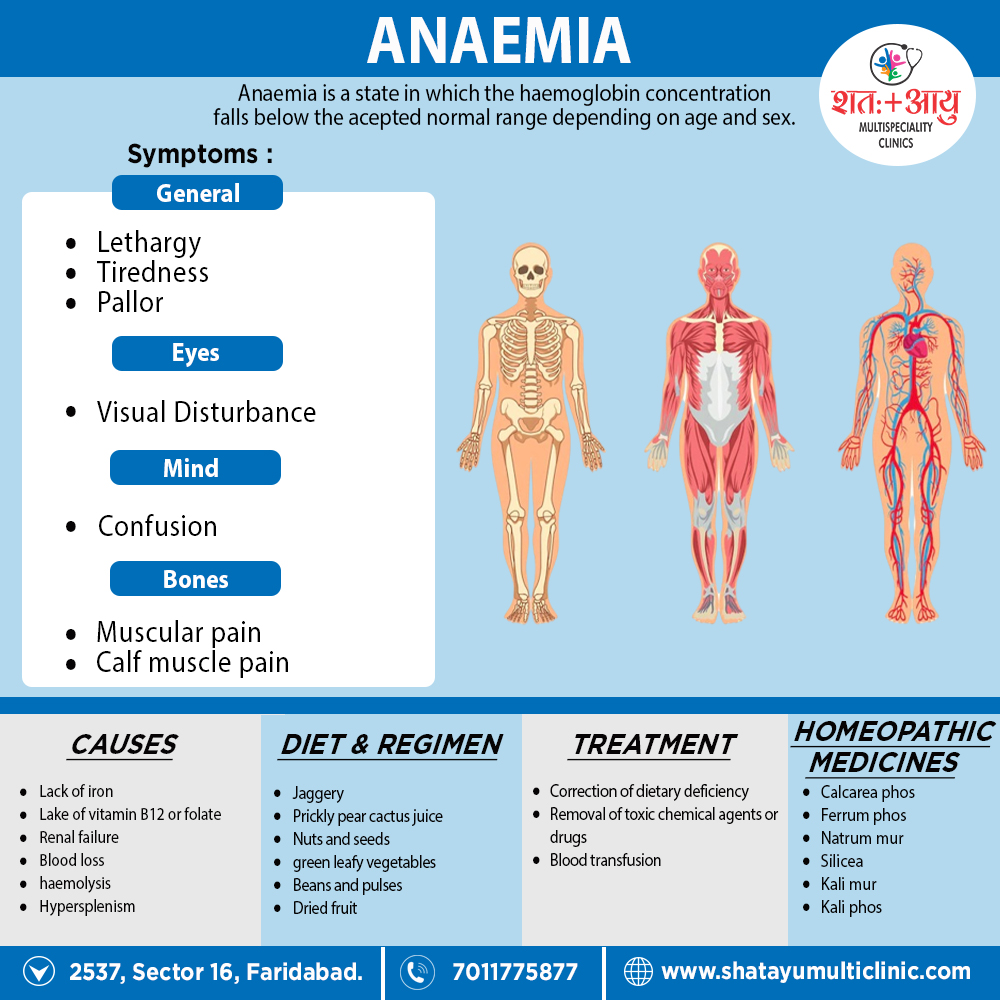Homeopathic Treatment of Anaemia
Homeopathy treats the person as a whole. It means that homeopathic treatment focuses on the patient as a person, as well as his pathological condition. The homeopathic medicines selected after a full individualizing examination and case-analysis.
which includes
- The medical history of the patient,
- Physical and mental constitution,
- Family history,
- Presenting symptoms,
- Underlying pathology,
- Possible causative factors etc.
A miasmatic tendency (predisposition/susceptibility) also often taken into account for the treatment of chronic conditions.
What Homoeopathic doctors do?
A homeopathy doctor tries to treat more than just the presenting symptoms. The focus is usually on what caused the disease condition? Why ‘this patient’ is sick ‘this way’?.
The disease diagnosis is important but in homeopathy, the cause of disease not just probed to the level of bacteria and viruses. Other factors like mental, emotional and physical stress that could predispose a person to illness also looked for. No a days, even modern medicine also considers a large number of diseases as psychosomatic. The correct homeopathy remedy tries to correct this disease predisposition.
The focus is not on curing the disease but to cure the person who is sick, to restore the health. If a disease pathology not very advanced, homeopathy remedies do give a hope for cure but even in incurable cases, the quality of life can greatly improved with homeopathic medicines.
Homeopathic Medicines for Anaemia
The homeopathic remedies (medicines) given below indicate the therapeutic affinity but this is not a complete and definite guide to the homeopathy treatment of this condition. The symptoms listed against each homeopathic remedy may not be directly related to this disease because in homeopathy general symptoms and constitutional indications also taken into account for selecting a remedy.
Calcarea phos
- This remedy acts by supplying new blood cells.
- Pains and cramps dependent on anaemic conditions.
- Waxy appearance of the skin due to anaemia.
- Chlorosis, complexion waxy, greenish-white, with constant headache also ringing in ears.[4]
- Anemia after acute diseases or chronic wasting diseases.
- Trembling or trembling hands; either with pain or other complaints.
- Coldness or soreness in spots, vertex, eyeballs, tip of nose, fingers etc.
- Sensation of crawling and numbness; after bad news.
- Anaemic children who are peevish, flabby, have cold extremities and weak digestion; additionally, they start convulsively when lying on back whereas better lying on side.[5]
Ferrum Phos
- Follows Calcarea phos. as soon as improvement of the general health sets in.
- Moreover, There is a want of red blood in the system.
- This remedy, by its power of attracting oxygen, colors the new blood-cells red also enriches them after they have been supplied by Calcarea phos.[4]
Natrum mur
- Spinal anaemia, paralytic weakness of the lower extremities, with general prostration, heaviness and sensation of fatigue
- Especially after a short walk or ascending steps; legs give way, so as to be unable to progress further.[4]
- Emaciation; descending, either of neck or abdomen.
- Besides this, Mucus membrane and skin may be dry or may produce thick, white or clear, watery, acrid discharges. Dryness of mouth, throat, rectum, vagina etc.
- Numbness of one side; parts lain on; with paralysis; fingers, parts seem too short.
- Easy exhaustion.[5]
Kali phos
- Cerebral anaemia, anaemic conditions of the brain causing undue, nervousness.
- Poverty of the blood from influences which continually depress the mind also nervous system.[4]
Kali mur
- This remedy may have to be given in anaemia, similarly as a secondary remedy or intercurrent, if such symptoms as eczema or eruptions of the skin coexist.[4]
Sulphur
- Partially recovers after that relapses.
- Frequent flushes of heat.
- Uneasiness in blood.
- Very sensitive to open air: to droughts, worse for washing and bath.
- Takes cold, Oppression, burning, stitches, congestion in chest. Additionally, Heat crown of head with cold feet.
- Soles burn at night, must be put out of bed.
- Hungry-starving especially at 11 a.m.
- Drowsy by day, restless nights.
- Starts from frightful dreams.[5]

